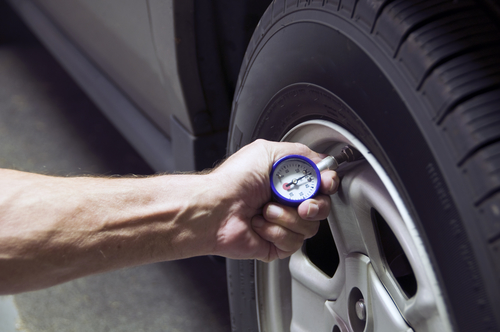For smooth, safe rides and to prolong the life of your tires, it’s important to find the optimal winter tire pressure for your vehicle. To ensure that you have “winter road worthy” tires, consider the following.
Why Winter Tire Pressure is Different Than Summer Tire Pressure
There are several misguided beliefs about the appropriate winter tire pressure that can result in costly problems for your car. In order to function properly and avoid problems, tires need to be appropriately filled to the correct pressure year-round. Why? Because weather conditions have an effect on tire pressure. For instance, during the summer months, the air expands in the tires as the weather heats up. During winter’s frigid months, the air pressure contracts. Something else to remember is that as you drive your vehicle, tire pressure increases slightly.
Why Manufacturer’s Recommendations Might Be Different than Max PSI
Vehicle manufacturers recommend PSI (pounds per square inch) for tire inflation and it’s the PSI rating you need to inflate your tires to. The PSI recommendation can be found inside the driver’s side door on a sticker, or in the manual. The PSI rating has been designed to deliver the most comfortable ride for your car. So, what about the “Max PSI” rating located on the sidewall? “Max PSI” is the PSI that the tires will support at maximum carry load. For regular, everyday use, tires need to be inflated to the vehicle’s manufacturer recommendation.
The Optimal Winter Tire Pressure
To ensure the optimal winter tire pressure follow the manufacturer’s recommendations. If you don’t have your manual handy, try looking for an online version for call a trusted auto repair shop. You can also find the recommended tire pressure on a sticker in the door jam as mentioned above. Some vehicle models place the stickers in the console, on the trunk lid, or on the fuel door.
The recommended tire pressure is typically between 30 and 35 PSI. Anything less will affect fuel economy and how the vehicle handles. When your tires are filled to the recommended PSI, you’ll benefit from their performance and optimum life. Some vehicle owner manuals advise operating winter tires several PSI higher, usually between 3 to 5 higher than the recommended pressures for all season and summer tires.
When’s the Best Time to Check Your Tire Pressure?
All you need to do to determine your current tire pressure is unscrew the fill valve cap and check it using a pressure gauge, right? Well, sort of. Whether or not the car has been driven, and the time of day, can alter the tire pressure enough that you may not get an accurate reading. As an alternative, check the tire pressure in the morning before driving the car. Other things you can do include checking the pressure when you fill up the gas tank, as the temperature changes, or every 30 days.
We can assist you in determining the best winter tire pressure for your vehicle. Click here to learn about our general car and maintenance services.






Join the discussion 550 Comments